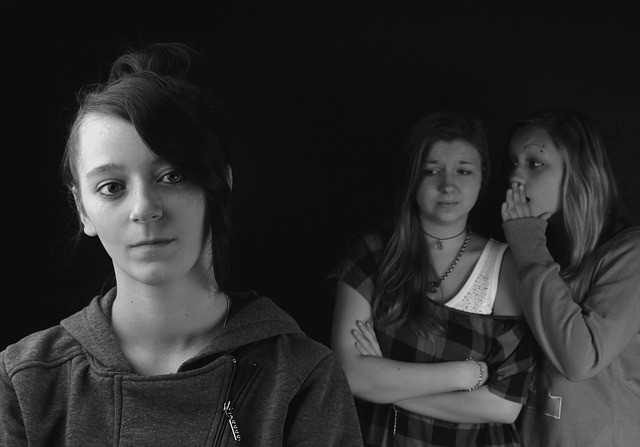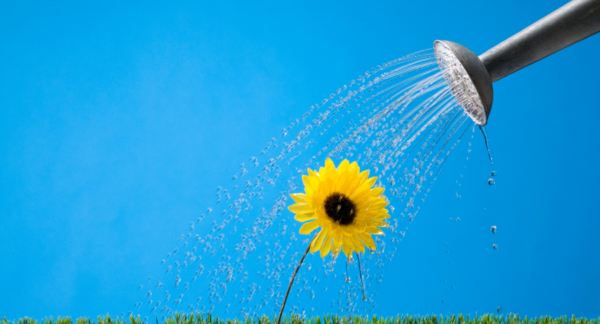Eating Disorders – The Mean Girls of Addiction
After more than two years of sobriety, I still find myself qualifying my addiction. I’ll read someone’s biography and think to myself, “God, at least I didn’t drink my perfume.” As if guzzling the Chanel Number 5 is somehow worse than plucking a dead fly out of a glass of Chardonnay and taking a swig. Something I did regularly when I lived in the Caribbean.
I say I don’t judge, but when a reader told me she went around at her daughter’s wedding and drank up the leftover booze in her guests’ glasses… I said snottily, “Did anyone see you do it?” As if I was the picture of impeccable, discretion at family milestones instead of the relative who had to be “explained”.
I am told all the time I am brutally honest about what I did when I was in my cups. But sometimes I don’t feel honest enough. I tell the stories that seem acceptable to me and leave out the messiest bits. I make decisions about just how far I can go, without losing the empathy of a listener. It’s a matter of degree.
The Messy Bits…
Speaking of messy bits, I almost never talk about my past eating disorder. I think eating disorders are the mean girls of addiction. We bow to their nasty demands in secret and hope things will somehow get better. When you have a binge-purge problem like I did, it is not exactly the cool thing to talk about. It never comes up in polite conversation.
But it should – as high as 50% of those who have eating disorders also have co-occurring substance use disorders. Imagine that. Eating disorders and alcoholism go together like, well, like a liter of cheap wine, a loaf of bread and an overdose of Correctol (perhaps the most subliminally perfect name for a product ever invented).
Eating disorders and substance disorders do not always present at the same time. One may flare up while the other is at bay or appear without forewarning. Whenever I think of this phenomenon, it reminds me of the Hydra. The mythological creature with nine hungry mouths. And the ability to grow two replacement heads when one is cut off. That’s what a clique of mean girls is like, isn’t it?
A History of Eating Disorders
When I was in my teens and twenties, I had a problem with food. I fasted or dieted or gorged. Then I used laxatives or my finger dipped in mustard to “clean myself out.” It was a constant, top of mind, hush-hush battle. It plagued me until I was in my mid-thirties and had children. I still used laxatives more than was normal, and I still dieted. My daughter says she does not remember ever seeing me eat when she was a child. But white wine began to take pole position and I sublimated my eating disorder to booze. In fact, I didn’t think about binging or purging for ten years.
I quit drinking a couple of years ago. About six months into my sobriety, I was gob smacked by the strong desire to hide in a dark room and devour candy. I’m not talking about a bag of candy. I am talking about pounds of candy. The voices in my head from long ago told me I was repulsive, but I couldn’t stop. It was the last thing I thought of at night and the first thing I thought of every morning.
“You are going to get fat.”
“And disgusting.”
“You want the Butter Pecan Gelato.”
“Get rid of it.”
“No food at all, today– just water.”
The Voices in My Head are Idiots…
The voices in my head are idiots, but it doesn’t mean I listen any less. I was not drinking, but I was in full-blown eating disorder mode – sober, but miserable. I am not sure how I broke the cycle. But I can tell you what I do now to stop the madness. Like the myth of the Hydra, I am dealing with one head at a time, cutting it off at the source and cauterizing the wound:
- I do not allow myself to isolate
- or falter from an established routine
- I eat
- And seek professional help.
- I get rid of everything that tempts – oddly I can be around booze with no problem, but not processed sugar in any form…
- I exercise every day
- Never compare myself to anyone else
- I stay busy.
- I write about and talk about eating disorders (just not over dinner…)
Sometimes the hardest things to talk about are the most important things to talk about. I feel squeamish discussing binging (and worse discussing purging). It’s like cutting, or hair pulling, or drinking your mother’s cologne. I have qualified my addiction and somehow being an ex-drunk sounds better to me than being someone who ate too much. Or not enough.
Beginning to Talk About IT…
But get this – I have started to talk about my struggles with eating disorders. There has been an outpouring of response from the nice women who empathize with me. Because they’ve been there and done that. The Renfrew Center says, “Eating disorders are complex illnesses with biological, genetic, psychological, social and developmental roots… Effective treatment involves a number of different therapeutic approaches, and usually a number of different levels of care…[and] an ongoing collaboration between patients, their families and loved ones, and clinicians.”
A successful recovery always involves community, conversation and education. When we unearth our darkest secrets, plumb the reasons for our behavior and share our experiences with others, there is no room for shame.



